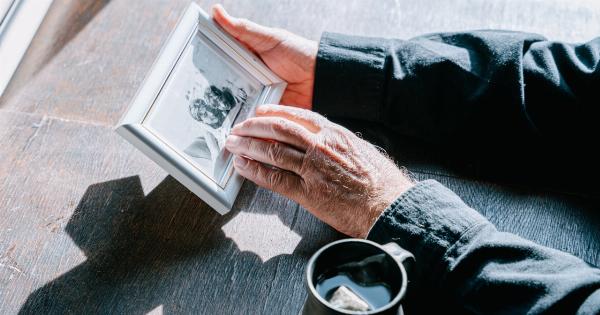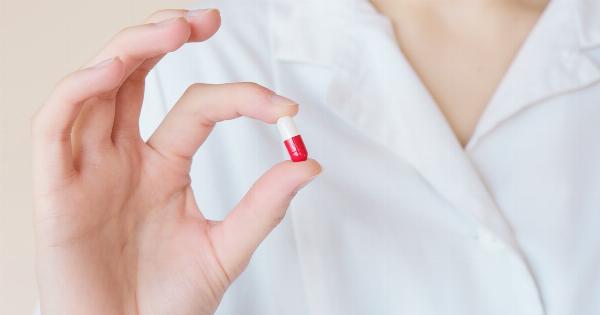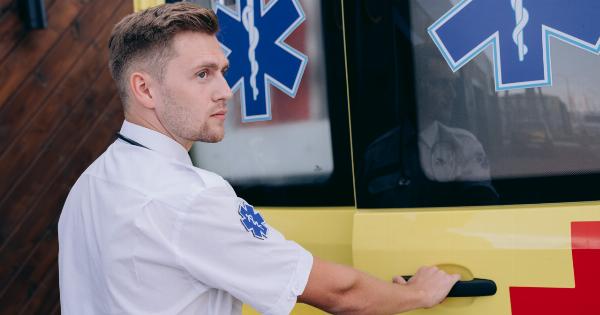Accidents can happen at any time, and being prepared for emergencies is crucial. One common emergency situation that requires immediate attention is bleeding.
Whether it’s a minor cut or a severe injury, knowing how to effectively stop bleeding can make a significant difference in saving someone’s life. In this article, we will discuss different methods to stop bleeding in emergency situations.
1. Apply Direct Pressure
The first and most crucial step in stopping bleeding is to apply direct pressure to the wound. Use a clean cloth, gauze pad, or your hand to apply firm pressure directly over the bleeding area. Maintain pressure until the bleeding stops or help arrives.
2. Elevate the Wounded Area
If possible, elevate the wounded area above the level of the heart. This simple action helps reduce blood flow and can aid in controlling bleeding. For example, raise an injured arm or leg and keep it elevated.
However, avoid elevating the injured area if a fracture or spinal injury is suspected.
3. Apply a Tourniquet
In severe cases where direct pressure alone is not sufficient, you may need to apply a tourniquet. A tourniquet is a device that restricts blood flow to a limb by compressing the underlying blood vessels.
Although tourniquets should only be used as a last resort, they can be life-saving in situations where bleeding cannot be controlled by other means. To apply a tourniquet:.
- Locate a long and wide fabric strip, belt, or any material that can be wrapped around the limb.
- Place the fabric about two inches above the bleeding site and tie it loosely but securely.
- Insert a rod, pen, or similar object into the knot and twist it until the bleeding stops.
- Secure the rod by tying it to the fabric strip.
- Remember to note the time the tourniquet was applied, as it is essential for medical professionals to know how long the tourniquet has been in place.
4. Use Pressure Points
If direct pressure and elevation fail to stop bleeding, applying pressure to specific pressure points may help. Pressure points are areas where a major artery lies close to the surface, making it easier to control bleeding.
Some common pressure points include:.
- Brachial artery: Located in the elbow crease, between the biceps and triceps muscles.
- Radial artery: Located on the inner aspect of the wrist, just below the thumb.
- Femoral artery: Located in the groin area, midway between the pubic bone and the hip bone.
To apply pressure on a pressure point:.
- Place your fingers directly over the pressure point.
- Apply firm pressure for at least 5 minutes or until the bleeding stops.
5. Utilize Hemostatic Agents
In recent years, the availability and use of hemostatic agents have become more common. These agents are designed to promote blood clotting and stop bleeding quickly. Hemostatic agents come in various forms, such as powders, granules, gels, or dressings.
They are particularly useful for controlling severe bleeding in situations where direct pressure alone is insufficient.
6. Dress the Wound Properly
After the bleeding has been controlled, it’s essential to dress the wound properly to prevent infection and promote healing. Here are the steps to dressing a wound:.
- Wash your hands thoroughly or use gloves to avoid contamination.
- Use a sterile saline solution or clean water to gently clean the wound.
- Apply an antiseptic solution or ointment to prevent infection.
- Place a sterile non-stick pad or gauze over the wound.
- Secure the dressing in place with adhesive tape or a bandage.
- Check the dressing regularly and change it as needed.
7. Seek Medical Help
While minor cuts and wounds can be managed at home, it’s essential to seek medical help for severe bleeding. In situations where bleeding cannot be controlled or the wound appears deep, professional medical assistance is necessary.
In addition, it’s crucial to seek medical help if the bleeding is related to a severe injury, such as a fractured bone or head trauma.
8. Stay Calm and Support the Injured Person
During any emergency situation, it’s important to remain calm and supportive to aid the injured person’s well-being. Talk to them calmly, reassure them, and keep them comfortable while you wait for medical help to arrive.
9. Preventing Infection
Proper wound care not only involves stopping bleeding but also preventing infection. Here are a few additional tips to minimize the risk of infection:.
- Wash your hands thoroughly before and after providing first aid.
- Use gloves when available to reduce the risk of contamination.
- Clean the wound gently with mild soap and water or a sterile saline solution.
- Avoid using hydrogen peroxide, alcohol, or iodine, as they can damage healthy tissues and slow down the healing process.
- Apply an antiseptic solution or ointment to the wound to prevent infection.
- Change the dressing regularly or as advised by healthcare professionals.
10. Stay Prepared and Attend First Aid Training
Prevention is always better than cure, and being adequately prepared can make a big difference during emergencies. Consider attending a first aid training course to learn essential life-saving skills, including how to stop bleeding.
Keep a well-equipped first aid kit handy at home, in your car, and when you travel. Regularly check your first aid kit to ensure it is stocked with essential supplies.
Conclusion
Knowing how to stop bleeding in emergency situations can save lives. Whether it’s through direct pressure, elevation, tourniquets, or using pressure points, it’s important to be prepared to act quickly.
By following the steps outlined in this article, you can provide immediate aid and prevent further complications. Don’t forget the importance of seeking professional medical help for severe or uncontrollable bleeding. Stay calm, stay prepared, and remember that your actions can make a significant impact during an emergency.






























